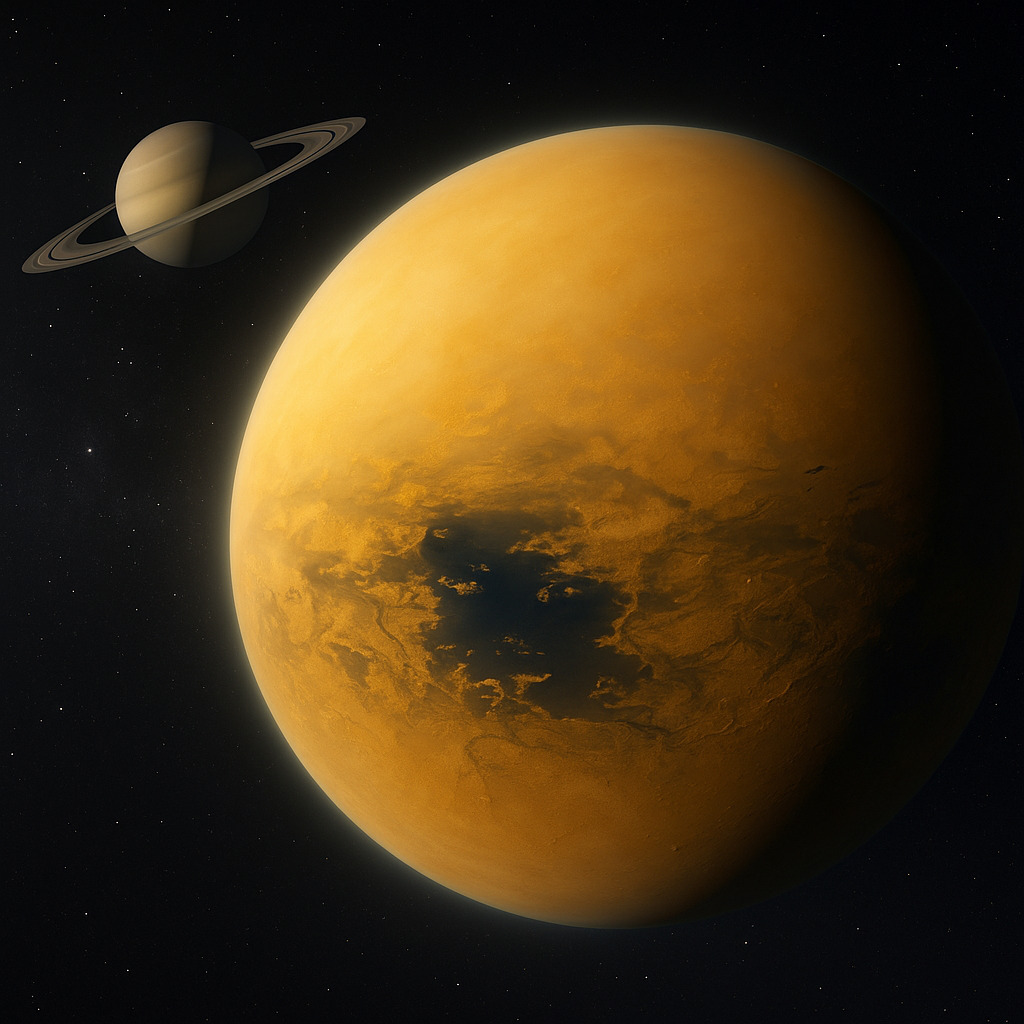Titan, the Echo of the Earth That Never Was
Methane rains, golden skies, and the alien Earth we left behind
In the frozen realm of Saturn, amidst swirling rings and magnetic chaos, there spins a moon that once whispered of home. Its name is Titan, and it is more than just another rock in space — it is the only moon in the Solar System with a true atmosphere, and the only one with lakes, rivers, and seasonal weather.
But its seas are not made of water. They are made of liquid methane.
Another Earth… inverted
On Earth, water sculpts mountains and nourishes life. On Titan, methane plays that role. Its hydrocarbon lakes, methane rainstorms, and ethane rivers make it the most Earth-like body in the outer Solar System — and yet, profoundly alien.
Titan is Earth’s mirror — flipped chemically, frozen in time.
A real atmosphere — the only one of its kind
Titan has a thick, multilayered atmosphere — denser than Earth’s. Composed primarily of nitrogen (98%) with traces of methane, it shields the surface from radiation and creates complex meteorological systems.
Its surface pressure is 1.5 times that of Earth, meaning humans wouldn’t need a pressurized suit to walk there — only thermal protection and an oxygen supply.
What would happen to a human on Titan?
It’s one of the most fascinating Titan curiosities: what if we stepped out unprotected?
- You wouldn’t explode.
- You wouldn’t freeze instantly.
- You’d need oxygen and extreme cold protection (–179°C).
- You couldn’t see well — sunlight is dim.
- You couldn’t hear much — the soft terrain muffles sound.
With a thermal suit and oxygen mask, you could survive minutes — even hours. On Titan, a human is not instantly doomed, only wildly out of place.
A fuel depot in the methane seas
Titan isn’t just alien — it’s rich. Its surface holds hundreds of times more hydrocarbons than all of Earth’s oil and gas reserves combined.
In the coming centuries, Titan could become a refueling station for deep space missions:
- Harvest methane and ethane as rocket fuel
- Power colonies using cryogenic generators
- Launch missions from a low-gravity environment
Its thick atmosphere and low gravity make Titan ideal for launching payloads or establishing energy outposts.
Dragonfly: our only hope — for now
In 2034, NASA will launch Dragonfly, a drone-like lander designed to fly across Titan’s surface. It will:
- Analyze surface chemistry
- Search for signs of prebiotic life
- Explore dunes and frozen lakebeds
But Dragonfly is alone. Meanwhile, Mars continues to receive robotic explorers while Titan waits in silence.
The alien lesson of Titan
Titan challenges not just science, but imagination. It reminds us that life and chemistry need not follow Earth's rules. That methane seas and nitrogen skies may still harbor the seeds of life.
And in our obsession with finding Earth 2.0, we may be overlooking a deeper truth: the universe is stranger — and more beautiful — than we dare believe.
Did you know?
- Titan is larger than Mercury.
- It has a denser atmosphere than Earth.
- It holds vast lakes of methane and ethane.
- Humans could walk on Titan with only a thermal suit and oxygen.
- Its gravity is low, making launches easier.
- NASA’s Dragonfly will be the first flying robot on another world beyond Mars.
- Titan may have a subsurface ocean beneath its icy crust.








Leave a Comment